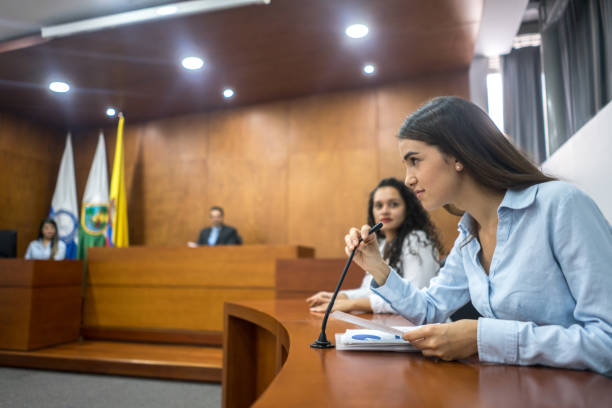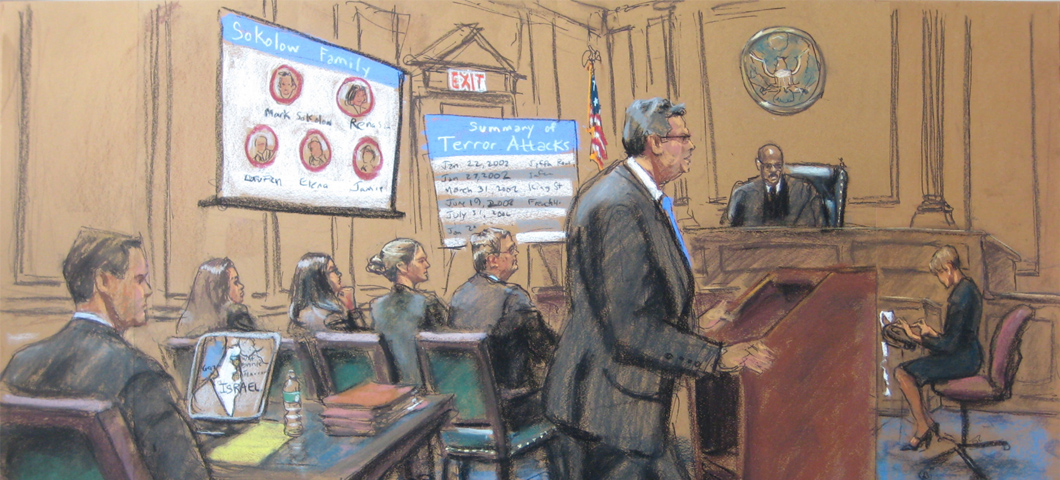Navigating Complex Instances: Just How to Establish Effective Trial Presentations for Optimum Results
Navigating Complex Instances: Just How to Establish Effective Trial Presentations for Optimum Results
Blog Article
Browsing the Complexities of Test Presentations: Tips for Seamless Delivery and Compelling Arguments
In the realm of legal process, the art of trial discussion stands as a crucial component of success. The complexities inherent in test presentations call for a fragile equilibrium of skill, finesse, and strategy.

Recognizing Test Goals
To properly navigate a trial, it is essential to have a clear understanding of the objectives that require to be accomplished. Prior to stepping into the court, legal teams need to define their goals and wanted outcomes. These goals act as leading concepts throughout the test, forming techniques and affecting decision-making procedures.
Comprehending test objectives entails a detailed evaluation of the situation, lawful precedents, and the customer's benefits. Trial Presentations. It calls for a thorough exam of the realities, identifying vital problems, and anticipating potential obstacles. By setting specific and measurable objectives, attorneys can customize their discussions and arguments to line up with the wanted outcomes
Moreover, a clear grasp of trial goals makes it possible for lawful teams to prioritize evidence, witnesses, and legal disagreements efficiently. It permits the advancement of a coherent story that resonates with the court and court, strengthening the general instance discussion.

Organizing Proof Efficiently
Having a clear understanding of trial purposes lays the structure for organizing evidence effectively in lawful procedures - Trial Presentations. By aligning the discussion of proof with the desired end results of the test, legal groups can enhance their disagreements and enhance their persuasiveness. One crucial facet of organizing evidence is classification. Grouping proof based upon themes or importance to certain legal components can assist streamline the discussion and make complicated information a lot more digestible for the court or jury.
Another crucial element in organizing evidence successfully is establishing a sensible flow. Providing proof in a meaningful and sequential fashion can assist develop an engaging narrative that supports the lawful arguments being made. Additionally, using aesthetic help such as graphes, timelines, or charts can even more enhance the organization of evidence and assist in making clear complicated relationships or sequences of occasions.
Moreover, making sure that all evidence offered is relevant and acceptable to the situation is essential. Inadmissible or unnecessary evidence can diminish the stamina of the debate and potentially damage the credibility of the here and now event. A meticulous testimonial and selection process should be undertaken to include just the most legitimately audio and impactful proof in the test presentation.
Crafting Persuasive Stories
Crafting engaging stories plays a crucial role in presenting convincing disagreements during lawful process. A well-crafted story has the power to captivate the audience, stimulate emotions, and inevitably sway the decision for the providing party. When building a story for a test discussion, it is necessary to establish a clear storyline that highlights bottom lines and connects them in a coherent manner. Begin by outlining the truths of the instance in a compelling fashion, making sure that the series of occasions is simple to adhere to. Introduce personalities efficiently, over at this website giving history information that assists the audience comprehend their actions and inspirations. Additionally, including brilliant summaries and interesting language can bring the story to life, making it extra memorable for the discretionary. By weaving with each other proof, testament, and lawful debates right into a influential and cohesive story, lawful professionals can efficiently promote for their clients and increase the chance of a favorable end result in the court room.
Understanding Visual Help
Reliable use aesthetic aids is essential to boosting the effect and clarity of trial presentations. Visual help, when utilized tactically, have the power to streamline intricate information, strengthen vital points, and leave a long lasting perception on the discretionary. To master visual aids in trial discussions, it is crucial to guarantee that they are clear, succinct, and pertinent to the debates being made.
When incorporating visual aids, such as charts, graphs, timelines, or photos, into a trial presentation, it is crucial to maintain them visually appealing yet professional. The visuals should match the spoken debates, supplying a graph of the information being talked about without overwhelming the audience with unneeded details.
Moreover, experimenting the aesthetic aids beforehand is imperative to make certain a seamless distribution throughout the trial. Acquainting oneself with the web content, transitions, and timings of each visual aid can aid keep the flow of the presentation and why not try these out avoid technical problems that might develop.
Providing Impactful Closing Debates
A this website compelling closing debate offers as the conclusion of a trial discussion, enveloping the core narrative and encouraging the discretionary towards a desirable choice. To deliver an impactful closing debate, it is critical to succinctly evaluate vital factors, highlight the staminas of your case, and resolve any type of weaknesses in a critical way. Begin by outlining the major disagreements that sustain your client's placement, highlighting why the evidence provided throughout the test sustains your narrative. It is necessary to produce a feeling of cohesion and quality, directing the discretionary in the direction of the preferred verdict.
Furthermore, including sob story can additionally enhance your closing debate. By attaching and humanizing the situation on an individual level with the decision-makers, you can stimulate compassion and understanding, affecting their perception of the truths offered. Additionally, restating the lawful criteria that must be satisfied for a desirable judgment can reinforce the validity of your setting. Inevitably, a well-crafted closing debate should leave a long lasting perception, engaging the discretionary to regulation in your customer's favor.
Verdict
To conclude, understanding test discussions entails recognizing purposes, arranging proof, crafting narratives, making use of aesthetic help, and delivering impactful closing arguments. By executing these techniques effectively, lawyers can present their instance flawlessly and make engaging disagreements in the court. It is important to navigate the complexities of trial presentations with accuracy and ability to accomplish success in legal proceedings.
By straightening the discussion of evidence with the desired end results of the test, legal groups can reinforce their disagreements and enhance their persuasiveness (Trial Presentations). To understand visual aids in test presentations, it is essential to ensure that they are clear, succinct, and appropriate to the arguments being made
An engaging closing disagreement serves as the end result of a trial discussion, enveloping the core narrative and encouraging the court and court in the direction of a favorable decision. Begin by describing the primary debates that sustain your customer's position, emphasizing why the evidence provided throughout the trial supports your narrative.In final thought, understanding test discussions includes comprehending purposes, arranging proof, crafting stories, making use of aesthetic help, and supplying impactful closing debates.
Report this page